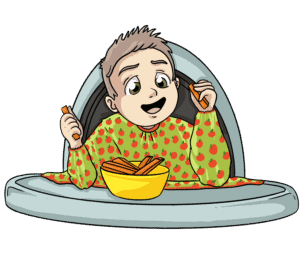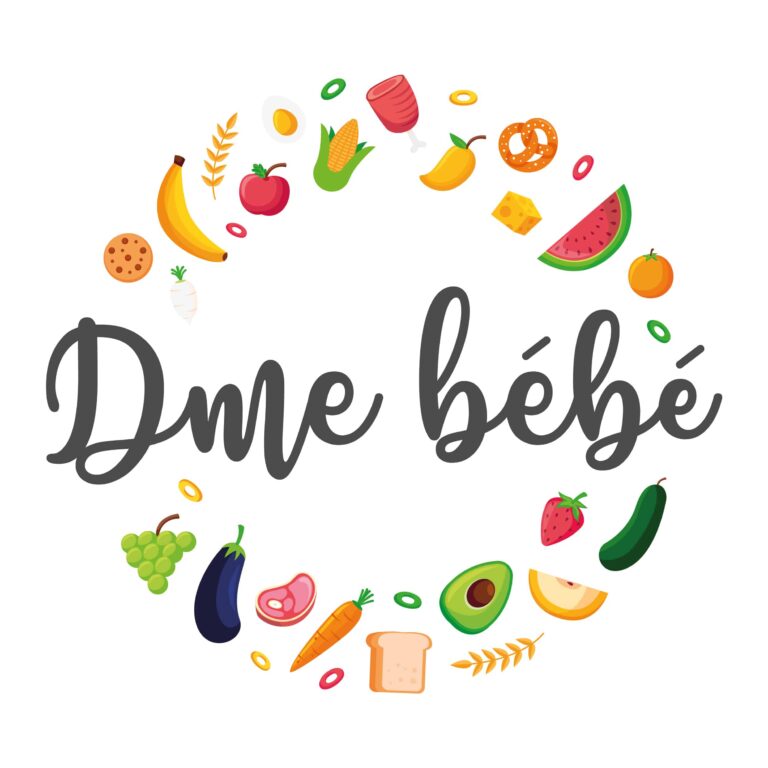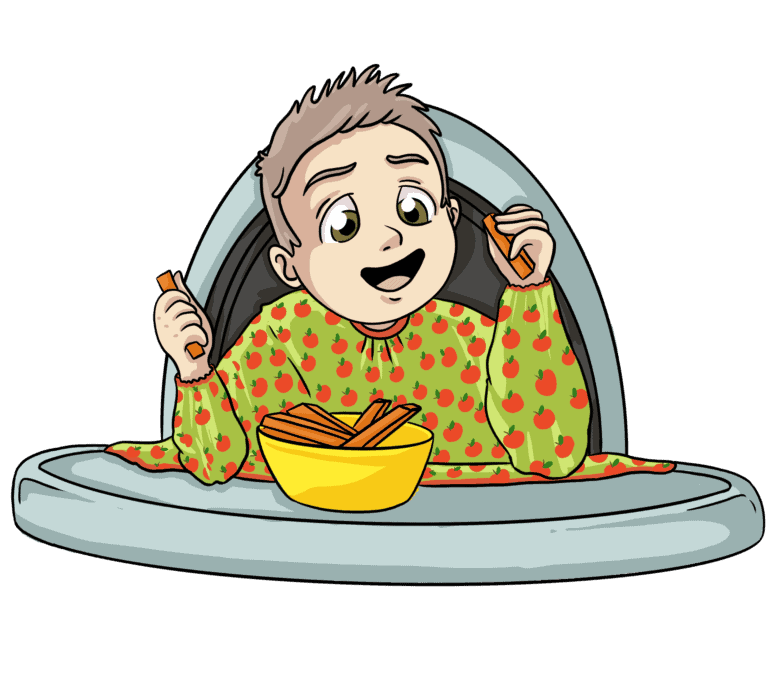The discovery of different foods is a nice taste experience for your little one. However, this adventure to live with baby has some risks to which it is important to be vigilant .
Certain foods will be avoided because of their compositions, others for security reasons. Some may even be dangerous !
Whether you have chosen classic diversification or food diversification led by the child, you will always have to avoid certain foods or adapt them so that they become security for baby.
Zoom on different risky foods and the alternatives that can be made in BLW !
Baby safety
Throughout the BLW , we think of baby's safety above all!
Baby safety during meals begins with its position in the high chair . A 90 -degree seat makes it possible to reduce the risk of suffocation . But beware, it is not because baby is sitting well that nothing can happen. See vigilant and always watch baby during his meals.
Safety is also implemented in terms of food and recipes offered to baby. Indeed, certain foods in their raw form will be avoided , because they can come to stay in the baby trachea and stay stuck there or even get stuck on the palate of your little one. The risk of suffocation is very high with these foods.
Until the age of 4 , please pay attention to raw and hard flat and tight foods long foods as well as small, round, hard .

How to offer baby foods safely?
Proposing baby at risk to baby can be scary. However, do not panic, there are several cutouts to discover foods at risk in complete risk !
Discover the different ways of offering them at your little one.
Small, round and hard foods
- Grapes, cherry tomatoes, candies, hull fruits, frispes of fruits and vegetables such as squash, watermelon, etc.
- Fruits: cut in 4 lengthwise
- Oilosals: mash, powder or in plant milks
- PEPINS & BODIES: Do not give them
Crusted and hard foods
- Apple, carrot, cucumber, etc.
- Offer them to cooked and melting baby, grated, smoothie, compote, in very fine strips
Flat foods and tights
- Ham, pancakes, salad, sandwich bread, etc.
- Bread: Toaste
- Salad, leafy vegetables, ham: to give in effiloche or in a recipe
- Pancakes: to be given in effiloche
Long foods
- Sausages, asparagus, beans, etc.
- Offer them to baby cut in 4 in length
- Vegetables: cooked and fondants
Other small precautions will also be taken to offer certain baby foods.
- The skin, seeds or fruit nuclei will be removed
- Crunchy fruits and vegetables will always be offered cooked and melting baby
- Dried fruits must be rehydrated and integrated into recipes
- Fish edges and meat bones will be removed
Foods to be avoided in baby feeding
Certain foods are to be avoided , at first, in baby's diet because they have a health risk . Some foods do not have a good enough composition to be offered to baby during meals. And others have no interest in the nutritional level for your little one.
Let each age the pleasure of discovery each age by offering baby the food following the following recommendations:
Foods to avoid from the component point of view:
- Drinks containing caffeine : not recommended before the age of 12
Example: coffee, tea, energy drinks, cola, etc.
- Foods with preservatives : not recommended before the age of 3. Possibility to offer them accompanied by a fresh fruit full of vitamin C neutralizing the negative effect of nitrites.
Example: industrial cold meats, commercial purees and yogurts, etc.
- Phytoœstrogens sources : not recommended before the age of 3
Example: tofu, soy juice, soy sauce, miso, etc.
- Foods with contaminants : not recommended before the age of 3 years
Example: eel, carp, catfish, monkfish, bar, pike, sea bream, tuna , etc.
- Chocolate and not recommended before the age of 3
- Foods and drinks with sweeteners (such as aspartame, etc.): prohibited before the age of 3 years .
Example: light products, light drinks, etc.
Foods to avoid from the nutritional point of view:
- Foods and drinks with refined sugars not recommended before the age of 3
Example: cakes, candies, cookies, trade ice cream, etc.
- Foods rich in sodium ( salt not recommended before the age of 3 years
Example: cookies, chips, commercial sauces, breaded fish and chicken, soups and bouilles in commercial cubes, industrial cold meats, etc.
- Ultra-transformed foods rich in saturated bad fat not recommended before the age of 3
Example: industrial cold meats, fries and trade kibbles, nuggets and breaded fish, etc.
- Low fat foods not recommended before the age of 3.
Example: yogurts containing less than 2% fat, skimmed milk, etc.
Foods to avoid from the microbiological point of view:
- Honey (food containing the bacterium Clostridium botulinum): prohibited before the age of 12 months
- Raw or little cooked meats : prohibited before the age of 4
Example: tartare, carpaccio, etc.
- Raw cold meats: not before the age of 4
Example: sausage, raw ham, etc.
- Raw fish and shells : prohibited before the age of 4
Example: smoked salmon, sushi, ceviche, carpaccio of Saint-Jacques, raw oysters, etc.
- Crusted or little cooked eggs in preparations: prohibited before the age of 4.
Example: shell, calf egg, poached, mayonnaise or non -pasturized César vinaigrette, dessert mousse, etc.
- Raw milk and raw milk cheeses : prohibited before the age of 4. It is possible to add the cheeses to raw milk to a recipe if it is sufficiently cooked.
Example: Reblochon, Roquefort, Brie, etc.
Don't panic ! Keep this little memo in mind and come out when the baby's week's menu is drawn up. Do you have a doubt about a safe format ? Find all the answers to your questions in our dedicated blog article!


2 responses